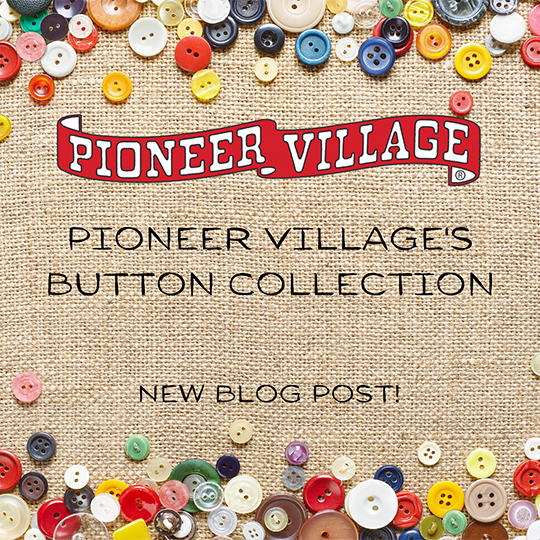Have you ever taken the time to really think about buttons? The history of buttons, different colors, unique shapes, various uses for buttons. You’ve never thought about that? Me neither. That was why I was intrigued when I heard about a button collection at the Harold Warp Pioneer Village.
I personally love buttons. My grandma had an enormous jar full of an assortment of buttons that I would look through when I visited her. It was so fun for me to sort through them all and find little dainty buttons, big bulky buttons, normal sewing buttons, and unique one-of-a-kind buttons. My grandma always let me pick out a couple of buttons to take home with me, so I had a small collection of my own.
Buttons are obviously useful for clothes but they are also great for crafts. On each of my Christmas cards last year I hot glued two little white buttons next to each other and decorated them to look like a snowman. I also got a miniature Christmas tree and hot glued one button on the end of each branch so I have a centerpiece full of color and cheer for the holiday season. When it comes to buttons, there are thousands of ways to use your creativity especially when you have thousands of buttons at your disposal.
One creative way the Harold Warp Pioneer Village displays their button collection is by covering different wooden shapes with them. The Hobby House, home of the Pioneer Village button collection, has wooden alphabet letters hanging on the wall. Each letter is covered with approximately 200-300 buttons. Along with the alphabet, there is a miniature rocking chair, wheelbarrow, windmill, water well, star, and covered wagon made of wood that are each covered and decorated with bunches of buttons. A full-sized button dress and some picture frames with buttons glued in different patterns that hang on the walls are the final displays in the button collection.
On November 16, 1960, Clara Warp Jensen wrote a letter to Harold Warp telling him that her husband, T.C. Jensen, had traveled to Murdock, Nebraska. It was here that he purchased the button collection from a lady named Mrs. Martha Kruse for 25 dollars and brought it back to Minden, Nebraska. Clara worked on adding the button collection to the Hobby House for all to see over the years.
Buttons are fun to collect but, if you think about it, any item can be collectible if you get enough of them in one place. For instance, I was proud to own a collection of bouncy balls that I took to school for show-and-tell in kindergarten once. The Hobby House, according to the History of Man’s Progress book, contains over 50 different collections with over 5,000 total individual items. Some collections in this building along with the buttons include canes, hatpins, trivets, model trains, arrowheads, belt buckles, night-caps, glass slippers, miniature night lamps, spittoons, cigar lighters, and cigar clippers.
Some people collect a super specific item and they know everything about each separate item such as how it is similar and different from the others. This is not the case for the button collection. With thousands of buttons in the Hobby House, it would be impossible to know the background of each individual button. That is the beauty in it, I guess. One button may be from your great, great, great, great, great, great, great grandmother’s wedding dress or even from the clothes of a royal king. However, another button may just be mass-produced in a factory and have thousands that look just like it. The world may never know.


Recent Comments